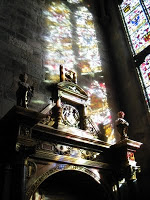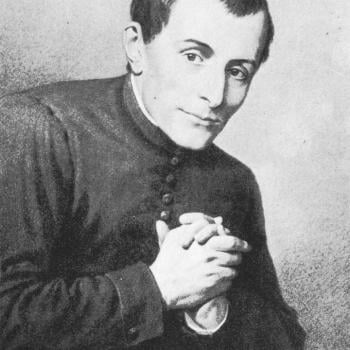 I was raised in an ecumenical community in Ann Arbor, Michigan called The Word of God. It began as a Catholic Charismatic movement, but soon attracted people from around the world with a large variety of backgrounds and rituals. As these customs began to be synthesized, some organic expressions of faith emerged within the community. The ritual that has stayed with me the most is one my family used to do every week. It was called Celebrating the Lord’s Day. The material was created by a Rabbi in the community who had begun to follow Jesus. The celebration was created as a way of “setting aside the Lord’s day and making it a family or household celebration.” It was modeled after the שַׁבָּת festive meals. Every Saturday night we would gather together and begin our meal with the lighting of a candle which was accompanied by the following words:
I was raised in an ecumenical community in Ann Arbor, Michigan called The Word of God. It began as a Catholic Charismatic movement, but soon attracted people from around the world with a large variety of backgrounds and rituals. As these customs began to be synthesized, some organic expressions of faith emerged within the community. The ritual that has stayed with me the most is one my family used to do every week. It was called Celebrating the Lord’s Day. The material was created by a Rabbi in the community who had begun to follow Jesus. The celebration was created as a way of “setting aside the Lord’s day and making it a family or household celebration.” It was modeled after the שַׁבָּת festive meals. Every Saturday night we would gather together and begin our meal with the lighting of a candle which was accompanied by the following words:
ASSISTANT: In the beginning was the Word and the Word was with God and the
Word was God.
GROUP: All things were made through Him and without Him nothing was made
that has been made.
ASSISTANT: In Him was life and the life was the light of men.
GROUP: The light shines in the darkness and the darkness has not overcome
it.
These words are forever burned in my mind as the summation of Christ’s Identity. He is the eternal light. The words come from John chapter one, verses one through five. It is worth noting that the above translation is not the one you will find in many bibles. The word translated as “overcome” is translated “comprehended” in the KJV and in the NASB, and “understood” in the NIV. This variation comes from an ambiguity in the Greek. The word being translated is Κατελαβεν, a form of Καταλαμβανω, which means grasp, comprehend, appreciate and overcome, put out, master (Shorter Lexicon of the Greek New Testament, 2nd Ed. Gingrich, pg. 102).
For a long time I couldn’t stand the way these other translations translated this passage. For me it made no sense. How could darkness comprehend something? By translating it as “comprehended” it almost gave darkness a sentience, a character, and an identity. As I began to reread the passage, in light of the rest of John, I came to the conclusion that giving darkness an identity was exactly what John intended to do.
The book of John seems to be primarily concerned with telling us who Jesus is. One of the main ways John does this is by juxtaposing Christ’s identity with its antithesis. The book of John introduces us to Jesus’ identity as “The Light.” What identity would then be darkness? After reading chapter three it becomes clearer. Verse nineteen states, “Light has come into the world, but men loved darkness instead of light because their deeds were evil” (NIV). This passage describes the identity of darkness as a place that is complacent with evil.
 Complacence must be confronted to be identified. This is articulated beautifully in the words of Vladimir Nabokov, who once wrote, “Complacency is a state of mind that exists only in retrospective: it has to be shattered before being ascertained.” The ministry of Christ is no less than a confrontation with the egotism, self-centeredness and indulgence of the people and systems he encountered. He tears off their disguises and reveals what they believed to be their identity was merely a mask. A mask used to hide their own selfish indulgence, and self centered egotism. Christ demonstrates a new way, and in that way we are drawn into a new identity. We are united with Christ.
Complacence must be confronted to be identified. This is articulated beautifully in the words of Vladimir Nabokov, who once wrote, “Complacency is a state of mind that exists only in retrospective: it has to be shattered before being ascertained.” The ministry of Christ is no less than a confrontation with the egotism, self-centeredness and indulgence of the people and systems he encountered. He tears off their disguises and reveals what they believed to be their identity was merely a mask. A mask used to hide their own selfish indulgence, and self centered egotism. Christ demonstrates a new way, and in that way we are drawn into a new identity. We are united with Christ.












